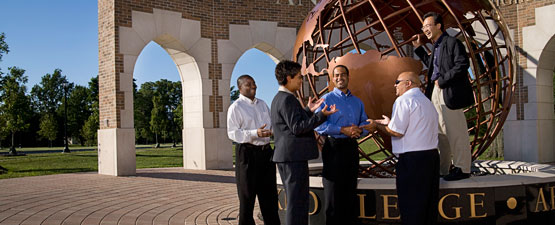Professional Dissertations DMin
Date of Award
2020
Document Type
Dissertation
Degree Name
Doctor of Ministry
College
Seventh-day Adventist Theological Seminary
Program
Doctor of Ministry DMin
First Advisor
Ron E. M. Clouzet
Second Advisor
Eduard Schmidt
Third Advisor
S. Joseph Kidder
Abstract
Problem
In every church I have pastored, there have been individuals who attend the church but are not members. Some come to community-focused events the church holds throughout the year, while others come to the weekly worship service. There are also some who come whenever the doors of the church are opened. This group of people includes both Christians from other denominations, as well as non-Christians. The Middletown Valley Seventh-day Adventist Church had an unusually large ratio of non-member to member attendance.
Method
A six-month evangelistic strategy was developed for the Middletown Valley Seventh-day Adventist Church. The strategy began with a four-week training seminar that taught members how to get decisions for membership. This training included sermons and afternoon training sessions. Following the training seminar, members implemented their training in the church for the next five months. Their goal was to bring individuals into community with the church, then invite them to become members. Success of the program was judged on non-members becoming members.
Results
When I began this project, there were seven non-member adults attending the Middletown Valley Seventh-day Adventist Church. During the implementation and evaluation, none joined the church through membership. In the subsequent years three of those individuals have become members of the church.
Conclusions
The first conclusion is that six months is not long enough to be effective in evaluating the effectiveness of this program. While the method for determining success of this project showed that it did not meet expectations, there were long-term results that give validity to the training. Members were successful in asking for decisions and all seven non-members expressed interest in becoming members. Six of them entered into Bible studies to understand the beliefs of the church, ultimately leading to the three joining. The four-week training program is effective when it is part of an evangelistic calendar. After new members have joined the church, they can be trained to get decisions for membership from their group of influence. There are three key factors that contributed to long-term successful decisions: investment of time, challenges of faith, and verbalization of the invitation. These concepts can be taught and reproduced in other churches by aiding non-members to become members.
Subject Area
Church work with new church members--Seventh-day Adventists; Church membership--Maryland--Middletown; New church members--Seventh-day Adventists; Baptism--Seventh-day Adventists; Decision making--Religious aspects--Seventh-day Adventists; Middletown Valley Seventh-day Adventist Church (Middletown, Md.)
Recommended Citation
Voigt, Joshua William, "A Strategy to Train Members to Encourage Non-Members to Make Decisions for Baptism and Church Membership at the Middletown Valley Seventh-day Adventist Church" (2020). Professional Dissertations DMin. 717.
https://dx.doi.org/10.32597/dmin/717/
https://digitalcommons.andrews.edu/dmin/717
Creative Commons License

This work is licensed under a Creative Commons Attribution-NonCommercial-No Derivative Works 4.0 International License.
DOI
https://dx.doi.org/10.32597/dmin/717/



